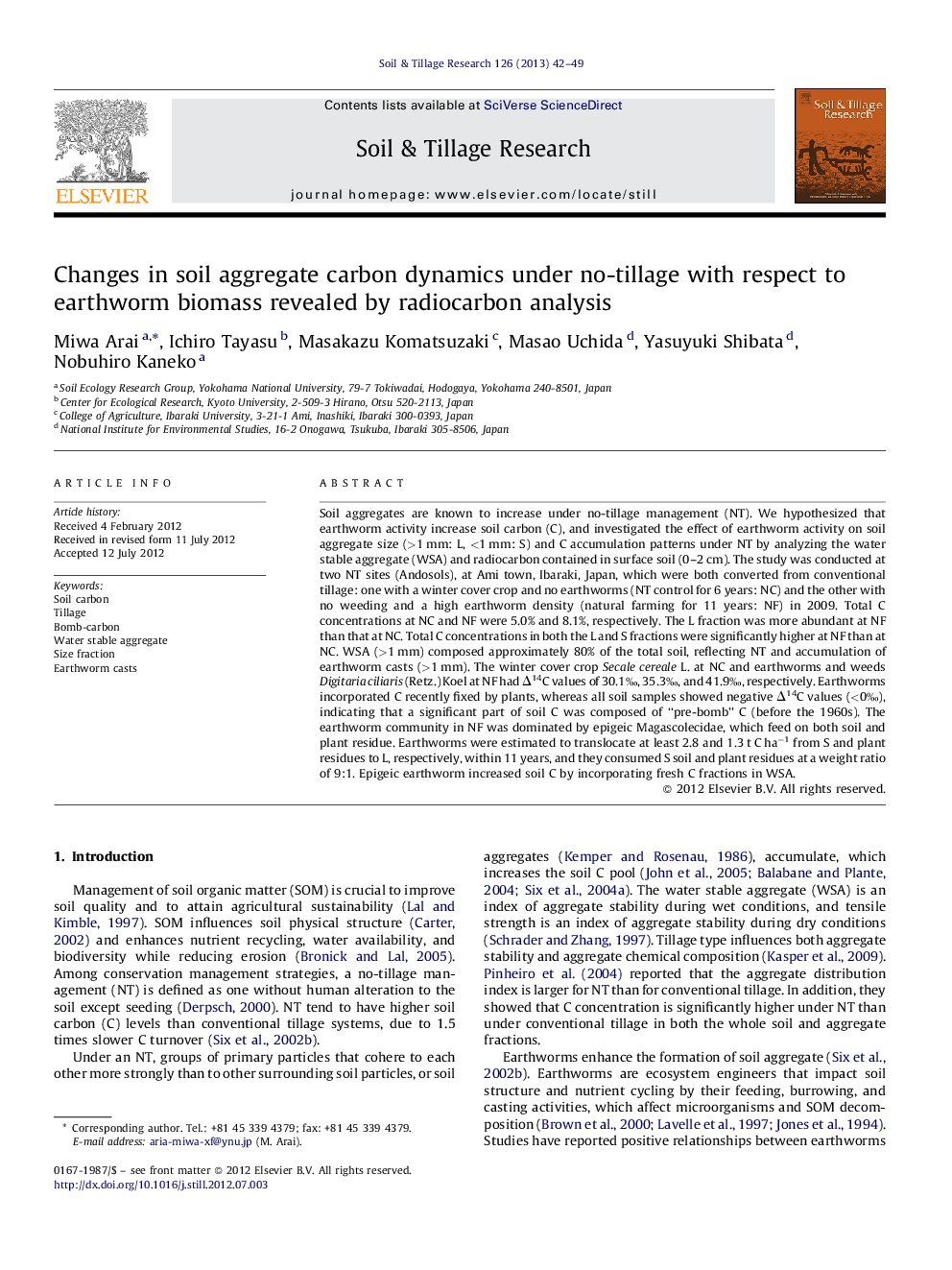| کد مقاله | کد نشریه | سال انتشار | مقاله انگلیسی | نسخه تمام متن |
|---|---|---|---|---|
| 305964 | 513064 | 2013 | 8 صفحه PDF | دانلود رایگان |

Soil aggregates are known to increase under no-tillage management (NT). We hypothesized that earthworm activity increase soil carbon (C), and investigated the effect of earthworm activity on soil aggregate size (>1 mm: L, <1 mm: S) and C accumulation patterns under NT by analyzing the water stable aggregate (WSA) and radiocarbon contained in surface soil (0–2 cm). The study was conducted at two NT sites (Andosols), at Ami town, Ibaraki, Japan, which were both converted from conventional tillage: one with a winter cover crop and no earthworms (NT control for 6 years: NC) and the other with no weeding and a high earthworm density (natural farming for 11 years: NF) in 2009. Total C concentrations at NC and NF were 5.0% and 8.1%, respectively. The L fraction was more abundant at NF than that at NC. Total C concentrations in both the L and S fractions were significantly higher at NF than at NC. WSA (>1 mm) composed approximately 80% of the total soil, reflecting NT and accumulation of earthworm casts (>1 mm). The winter cover crop Secale cereale L. at NC and earthworms and weeds Digitaria ciliaris (Retz.) Koel at NF had Δ14C values of 30.1‰, 35.3‰, and 41.9‰, respectively. Earthworms incorporated C recently fixed by plants, whereas all soil samples showed negative Δ14C values (<0‰), indicating that a significant part of soil C was composed of “pre-bomb” C (before the 1960s). The earthworm community in NF was dominated by epigeic Magascolecidae, which feed on both soil and plant residue. Earthworms were estimated to translocate at least 2.8 and 1.3 t C ha−1 from S and plant residues to L, respectively, within 11 years, and they consumed S soil and plant residues at a weight ratio of 9:1. Epigeic earthworm increased soil C by incorporating fresh C fractions in WSA.
► Water stable aggregate (>1 mm) composed about 80% of the total soils as a result of no-tillage management and the accumulation of earthworm casts.
► Earthworms incorporated C recently fixed by plants.
► All soil samples showed negative Δ14C values, including that a significant part of soil C was “pre-bomb” C (before the 1960s).
► Earthworms moved C from soil fragments and plant residues to soil aggregates of >1 mm.
► Earthworms mixed soil and plant C at an estimated ratio of 9:1.
Journal: Soil and Tillage Research - Volume 126, January 2013, Pages 42–49